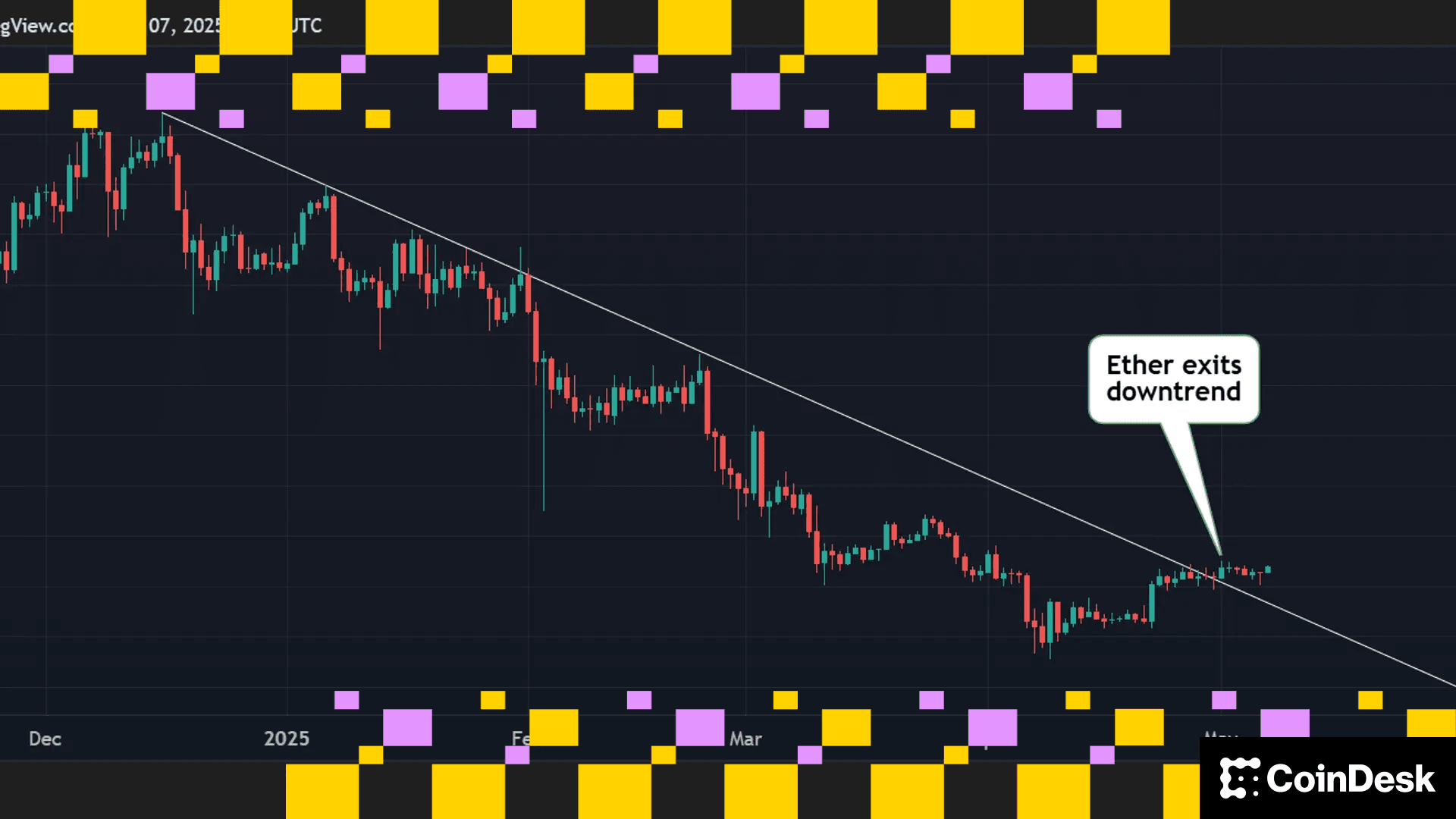Investing in 'Gold' – Via Bitcoin – Is Cheaper Than Ever
All but one of the recently launched spot bitcoin exchange-traded funds (ETF) charge a lower fee than the largest gold ETF, making them a cheaper investment into a gold-like asset.

- Gold and bitcoin are often compared as haven assets.
- The newly introduced bitcoin ETFs provide an even cheaper way to invest in "gold" – a digital version, anyway – as all but one charge a lower fee to investors than the biggest gold ETF.
There's gold, the precious metal, and then there's digital gold, aka bitcoin.
For about two decades, the relatively easy way to invest in the original gold was to buy an ETF like State Street's GLD.
Starting last month, digital gold – bitcoin
The biggest gold ETF, the aforementioned GLD, has an expense ratio – a measure of how much an ETF issuer charges investors – of 0.4%. All but one of the 10 newly approved bitcoin ETFs (Grayscale's GBTC is the exception) have a lower expense ratio.
In the blink of an eye, digital gold is cheaper to buy than the OG version.
"*Nobody* expected that to happen this quickly," ETF Store President Nate Geraci posted on X.
Invesco & Galaxy chopping fee on BTCO from 0.39% to 0.25%…
— Nate Geraci (@NateGeraci) January 30, 2024
9 of 10 spot bitcoin ETFs now priced at 0.30% or less.
That’s 0.10%+ cheaper than largest gold ETF.
*Nobody* expected that to happen this quickly.
And yes, one of these fees is not the like others.
h/t @JSeyff pic.twitter.com/Pn7tj41I4q
Gold – the conventional kind – is viewed as a haven for investors wanting out of the daily – sometimes hourly or less – twists and turns in financial markets. It's not the only option, though gold is generally easier to buy than other non-correlated assets like art, collectibles, real estate, music royalties, etc. A single ounce of gold is worth about $2,000, so a little bit goes a long way toward stashing one's savings. ETFs that hold them take up even less space – just a few bits of data in some brokerage's computers.
Bitcoin is viewed by many as a more modern store of value. And, given that bitcoin ETFs are charging investors relatively little, it's an even cheaper hedge for investors. Ten issuers introduced them on Jan. 11.
Franklin Templeton, for example, charges a 0.19% management fee, the lowest out of all issuers. Most are below 0.30%. By contrast, the biggest gold ETF, the SPDR Gold Trust, charges 0.40%.
Gold is a useful analogy for bitcoin among some investors because of their similarities, but the metal also differs greatly from the cryptocurrency, said Matt Hougan, chief investment officer at Bitwise, one of the bitcoin ETF issuers.
He said gold is better than bitcoin in one way because it has been around much longer, but it’s also worse because bitcoin is much easier to store, move, divide and use – and harder to fake.
Does bitcoin have more potential than gold?
“Many people focus on the fact that bitcoin is worse than gold in certain attributes, and that therefore its potential market cap is a fraction of gold's. But what if the more important thing is that bitcoin is better than gold in many ways, and that therefore its addressable market is much larger than gold?” he said. “I actually think that’s more likely.”
Bitcoin's value comes from the fact that it has a limited supply of 21 million bitcoin, which makes it a scarce asset just like gold. It is also self-governed and cannot be influenced by the government, similar to the metal.
“I like to think of bitcoin as digital super gold,” said Austin Alexander, co-founder of LayerTwo Labs, a venture focused on advancing bitcoin. “The digital gold does what gold does but better: It’s more scarce, more durable and more transmissible than gold."
More For You
Exchange Review - March 2025

CoinDesk Data's monthly Exchange Review captures the key developments within the cryptocurrency exchange market. The report includes analyses that relate to exchange volumes, crypto derivatives trading, market segmentation by fees, fiat trading, and more.
What to know:
Trading activity softened in March as market uncertainty grew amid escalating tariff tensions between the U.S. and global trading partners. Centralized exchanges recorded their lowest combined trading volume since October, declining 6.24% to $6.79tn. This marked the third consecutive monthly decline across both market segments, with spot trading volume falling 14.1% to $1.98tn and derivatives trading slipping 2.56% to $4.81tn.
- Trading Volumes Decline for Third Consecutive Month: Combined spot and derivatives trading volume on centralized exchanges fell by 6.24% to $6.79tn in March 2025, reaching the lowest level since October. Both spot and derivatives markets recorded their third consecutive monthly decline, falling 14.1% and 2.56% to $1.98tn and $4.81tn respectively.
- Institutional Crypto Trading Volume on CME Falls 23.5%: In March, total derivatives trading volume on the CME exchange fell by 23.5% to $175bn, the lowest monthly volume since October 2024. CME's market share among derivatives exchanges dropped from 4.63% to 3.64%, suggesting declining institutional interest amid current macroeconomic conditions.
- Bybit Spot Market Share Slides in March: Spot trading volume on Bybit fell by 52.1% to $81.1bn in March, coinciding with decreased trading activity following the hack of the exchange's cold wallets in February. Bybit's spot market share dropped from 7.35% to 4.10%, its lowest since July 2023.
Higit pang Para sa Iyo











